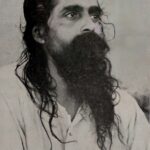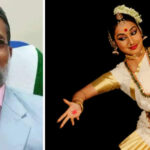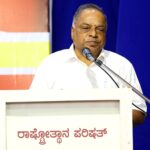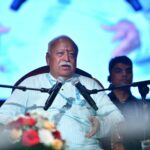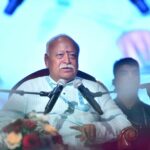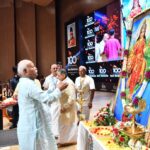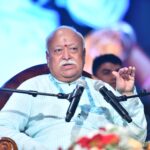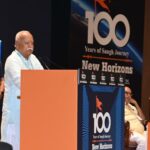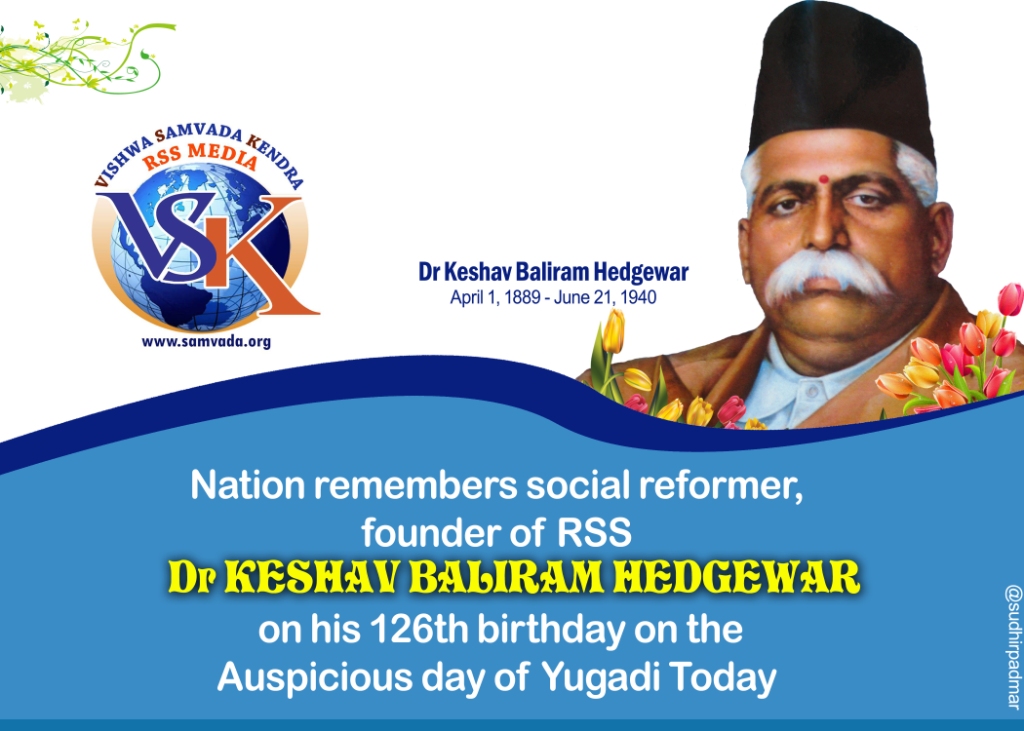
Bengaluru March 21: RSS swayamsevaks across the world remembering their icon for social resurgence, Dr Keshava Baliram Hedgewar, founder of Rashtreeya Swayamsevak Sangh (RSS), on his 126th Birth anniversary today.
Dr Hedgewar was born on Yugadi Day in 1889, the auspicious day of Chaitra Pratipada, the new year beginning of Hindu calender year.
Dr Keshav Baliram Hedgewar (April 1, 1889 – June 21, 1940) was the founding Sarsanghachalak (Supreme Chief) of the Rashtriya Swayamsevak Sangh (RSS). Hedgewar founded the RSS in Nagpur in 1925, with the intention of promoting the concept of a united India deeply rooted in indigenous ideology. He drew upon influences from social and spiritual Indians such as Swami Vivekananda, Vinayak Damodar Savarkar and Aurobindo to develop the core philosophy of the RSS .
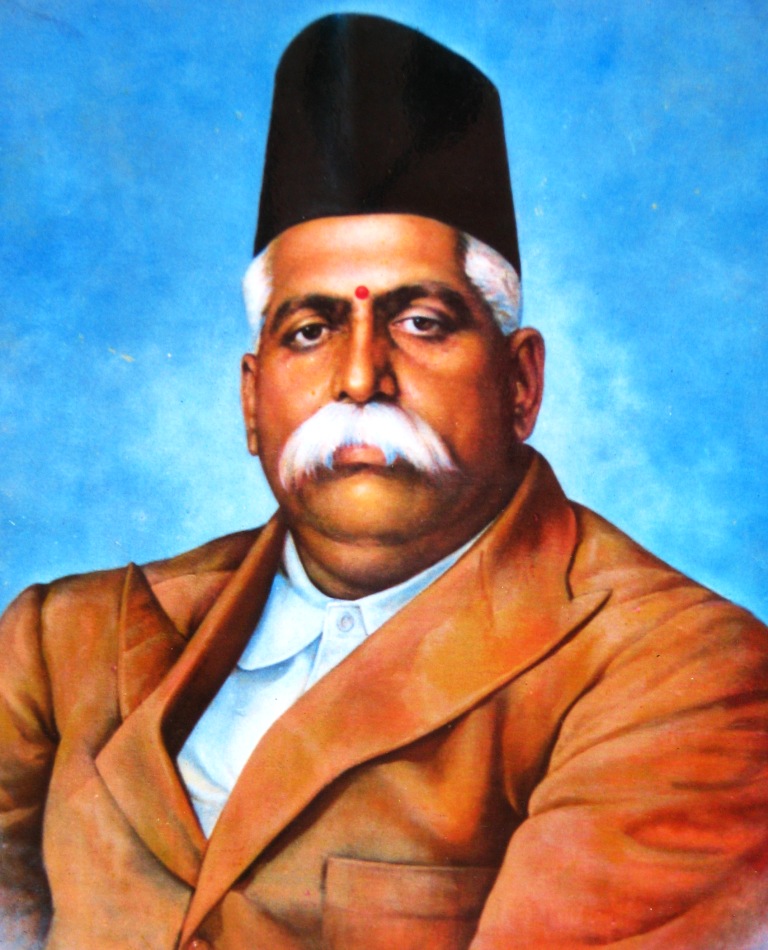
Dr. Hedgewar was born on April 1, 1889 in Nagpur. He was born on the auspicious day of Gudi Padwa, which is the Hindu New Year’s Day. He hailed from a family of Deshastha Brahmins. His forefathers had migrated from Kandkurti in Bodhan taluka of Nizamabad near the border of Maharashtra and Andhra Pradesh where three rivers of Central India namely the Godavari, Vanjara and Haridra meet. They had migrated to Nagpur in the early nineteenth century to escape Muslim persecution at Kandkurti. His parents were Baliram pant Hedgewar and Revati. His father was an orthodox priest and they were a family of modest means.
When Keshav was thirteen, both his parents succumbed to the epidemic of plague. He had to suffer great hardships on account of being orphaned but never did he seek any help from others as he had a lot of self-respect. Despite travails, his attention to his studies was never affected. His elder brothers Mahadev pant and Sitaram pant ensured that he was provided with good education. When he was studying in Neel City High School in Nagpur, he was rusticated for singing “Vande Mataram” in violation of the circular issued by the then British government. As a result he had to pursue his high school studies at the Rashtriya Vidyalaya in Yavatmal and later in Pune. After matriculating, he was sent to Kolkata by Dr. B. S. Moonje, (National President of Hindu Mahasabha) in 1910 to pursue his medical studies. After passing the L.M.&S. Examination from the National Medical College in June 1914, he completed one year apprenticeship and returned to Nagpur in 1915 as a doctor.
NAGPUR, the Karmabhoomi
In Nagpur, Hedgewar became involved with social work and also with the Bal Gangadhar Tilak faction of the Congress Party, through which he developed a close association with Dr. Moonje who later became his mentor.
In the 1920 session of Indian National Congress held in Nagpur, Dr.Hedgewar was appointed as the Deputy Chief of volunteers cadre overseeing the whole function. This volunteer organisation was named as Bharat Swayamsewak Mandal and was headed by Dr. Laxman V. Paranjape (Dr. Hedgewar as his Deputy). He and his colleagues unsuccessfully campaigned for the passage of a resolution declaring ‘Poorna Swaraj (complete self-rule) as the goal of the Congress.
He participated actively in the Non-cooperation movement in 1920 and undertook a brisk tour in village after village in the Central Provinces for mass awakening. He was promptly jailed and sentenced to one year rigorous imprisonment. During this time, he was also a member of the Hindustan Republican Association.
Genesis of RSS:
With the intention of uniting Indians and to awaken the spirit of patriotism, discipline and bravery in them, Dr.Hedgewar founded the Sangh, which was later named Rashtriya Swayamsevak Sangh in 1925, on the auspicious day of Vijayadashami.[5] on 28th Sep, 1925. The founder members were Dr. B.S. Moonje, Bapuji Soni, Gatate Ji. Dr Paranjape along with Hedgewar. Hedgewar became involved with social work and also with Tilak faction of the Congress Party, through which he developed a close association with Dr Moonje who later became his Mentor of Indian Philosophy. In the 1920 session of Indian National Congress was held in Nagpur, Dr Hedgewar was appointed as the Deputy Chief of volunteers cader overseeing the whole function. This volunteer organisation was named as Bharat Swayamsewak Mandal which was headed by Dr. Laxman V. Paranjape (Dr. Hedgewar as his Deputy). All volunteers were told to wear a certain uniform (to be made at their own expense) which was later on adopted as RSS’s official uniform from 1925 to 1940. This could be called as the real beginning of RSS because Dr L. V. Paranjpe had declared the intention of starting such an organisation in future. Dr B. S. Moonje and Dr. L. V. Paranjpe funded and actively supported Hedgewar to start RSS as the Top Senior Leaders of Nagpur region.
He evolved a unique technique which was simple and inexpensive. He selected a group of young boys who would assemble in an open field every day for one hour. During that time, in addition to playing national games, he began to inculcate in them a sense of patriotism, unity, discipline and selflessness, by singing of patriotic songs and narration of stories of patriots. He appealed to the youth to spare one hour a day for the Nation by attending the Shakha. He visualised that the one hour participation in the Shakha would ultimately transform the youth to devote greater time and energy in the service of the nation.
Dr. Hedgewar was a good organizer and traveled extensively throughout the country, recruiting and developing good swayamsevaks. He advised and encouraged swayamsevaks to undertake higher education and for that purpose to go to different places in the country. He said higher educational attainment by Karyakartas would confer better suitability and capacities to spread the work of the RSS and going to different places was necessary to spread the work of RSS throughout the country.
Continuous and strenuous spate of activities took a toll on his health. His health went on deteriorating. Often he suffered from chronic back pain. He started delegating his responsibilities to M.S.Golwalkar, who later succeeded him as Sarsanghachalak (Supreme Leader) of RSS. In January 1940, he was taken to Rajgir in Bihar for the hot-spring treatment.
He attended the annual Sangh Shiksha Varg in 1940, where he gave his last message to Swayamsevaks, saying: “Today, I am seeing a mini-Bharat before me. Let there be no occasion in the lives of any of you to say that you were once a Sangh Swayamsevak some years ago.”
Dr.Hedgewar died on the morning of June 21, 1940 in Nagpur. His last rites were performed in the locality of Resham Bagh in Nagpur.
Dr.Hedgewar instilled a work culture in the RSS, like the devotion to the national flag, priority to ideologies over individuals, full-time dedicated volunteers, daily Shakha (gathering every day by members of all ages for games and singing nationalistic songs) and doing away with the custom of personality following. His foresight and capability is established by the fact that the RSS today is one of the world’s largest social organisations. Even today, Dr.Hedgewar is a much revered figure in the Nationalist Movement of India.
Find a book on Dr Hedgewar: Click to Download

